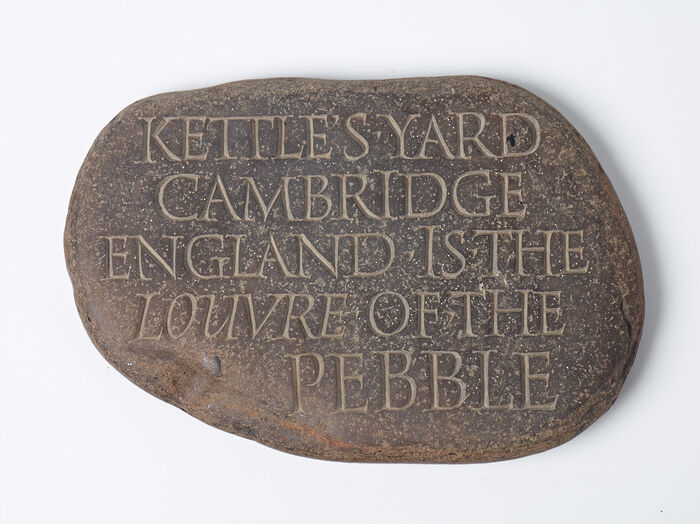Pantone Colour of the Year 2020: Strong and stable in Classic Blue?
In a turbulent world, we need colours that inspire action, not encourage complacent nostalgia, argues Gabriel Humphreys.
Every year since 2000, Pantone, colour monopolists of the world, have released their Colour of the Year. It is the subject of much discussion and secrecy prior to its release – the colour itself is chosen by a group of representatives from various nations’ colour standards groups, who meet in secret, biannually, in a European capital. This is the Illuminati of colour we’re talking about.
The thoughtfully anointed colour is chosen specifically to reflect the cultural, political and social zeitgeist – be that dismay and disruption, or hope and continuity. It is also tasked with looking forward as well as back, hoping to invoke where we will be going in the year to come, as well as acknowledging our shared past. It’s a trend forecast with an extended mandate, and is often portrayed as an antidote to the turbulence of current affairs – a soothing swatch to combat our discontent. As the announcement of the 2011 colour, Honeysuckle, affirms, “In times of stress, we need something to lift our spirits.”
"...the world seems more unstable and divided than ever, but is this attempt at a stabilising nostalgia really the right approach?"
But its power goes beyond the symbolic and somehow oddly philosophical. The much-publicised announcement is paired with the colour’s feature in PantoneView, the company’s annual trend forecasting tome, which covers everything from fashion to interior design. This year’s offering contains eight “trend palettes”, Pantone’s 72 forecasted colours for the year, and will only set you back a cool £300.
Sometimes, Pantone has got it so right. In 2016 the title was split between Rose Quartz, a subtle nod to the unavoidable Millennial Pink, and Serenity, a cool mid-blue. This was a pairing that both recreated and deconstructed the binaries that govern society: it felt like a welcome rebellion, albeit a symbolic one. 2019’s Living Coral also sat well – a lively, warm, golden pink that also came with an edge of the environmentally conscious. But it was just an edge, and a seemingly tokenistic one at that. Not once does Pantone’s press release mention the extensive and catastrophic deaths of vast swathes of coral colonies caused by global warming, making only one veiled reference to “our continually shifting environment”.
But this year’s choice, Classic Blue, falls completely short. It is perhaps telling that it has received quite such vicious critiques from an unprecedented number of journalists – the colour usually draws more listicles with what to buy in the shade than opinion pieces on why it is so vile and outmoded.
As for my own hot take? I feel like I stared at the Pantone website for days, just trying to find something positive to say about this colour. Searching for some connection to the present, I thought first of the catwalk – but so many blues seen recently have been brighter, lighter, more vibrant and alive. Classic Blue seems to sit in an odd middle ground between a deep Navy and a striking sky blue, and in doing so it doesn’t really make any statement at all.
Pantone claims the shade instils “calm, confidence, and connection”, and “highlights our desire for a dependable and stable foundation”. It would be hard to deny that both politically and culturally the world seems more unstable and divided than ever, but is this attempt at a stabilising nostalgia really the right approach? Painting over our problems and divisions is hardly likely to heal them, save superficially, and even worse is a passive waiting for things to return to some sort of ‘normal’ as this reliance on a “Classic” seems to suggest. There is also something almost sinister about the emphasis on the “timeless and enduring” nature of the colour, that seems to align itself with that favourite hard-right rhetoric of a return to an elusive, glorious past in which things were simpler and better.
This year, rather than exposing the flaws of a society it seeks to characterise, this colour chooses to placate or ignore them. You might think I’m placing a lot of pressure and responsibility on just the meaning and intention of a single colour – and I am. But Pantone sets out to capture a zeitgeist, and passivity and nostalgia are hardly the prevalent sentiment in so many creative industries at the moment. Protest, conflict, upheaval, action – above all that is what we’re seeing, and that’s what the Colour of the Year should reflect. Give me an empassioned red or a flaming orange – yes, a hope and desire that things will get better, but never a complacent one.
 News / CUP announces funding scheme for under-represented academics19 December 2025
News / CUP announces funding scheme for under-represented academics19 December 2025 News / SU reluctantly registers controversial women’s soc18 December 2025
News / SU reluctantly registers controversial women’s soc18 December 2025 News / Cambridge welcomes UK rejoining the Erasmus scheme20 December 2025
News / Cambridge welcomes UK rejoining the Erasmus scheme20 December 2025 Features / Should I stay or should I go? Cambridge students and alumni reflect on how their memories stay with them15 December 2025
Features / Should I stay or should I go? Cambridge students and alumni reflect on how their memories stay with them15 December 2025 Film & TV / Timothée Chalamet and the era-fication of film marketing21 December 2025
Film & TV / Timothée Chalamet and the era-fication of film marketing21 December 2025











